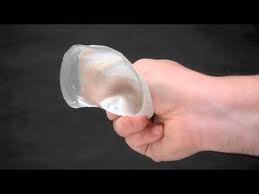Breast augmentation depends largely, if not almost completely, on a prosthetic device to create its results. There is certainly a strong influence of surgical technique which is not to be underestimated but, in the end, without a device there would be no result. (fat injection techniques not withstanding) The evolution of breast implant device is a very interesting one that has included advances in the filler material (gel) and the enveloping shell composition and shape.

Sientra received its FDA approval of their devices in early 2012 based on five years of prior testing. That clinical and performance information was reported in detail in a paper published in the November 2012 issue of Plastic and Reconstructive Surgery. The study comes from 7 different surgeons (centers) and looked at 1,788 patients (3,506 implants ) whom were implanted and then followed up for five years. Extracting from that information, primary breast augmentation patients numbered 1,116 patients and 2,230 breast implants. While the implants used a wide variety of different volumes, styles and implant locations (submuscular vs subglandular), the risk of implant rupture was 1.8%, capsular contracture was 9% and reoperation rates of 23.8% after five years. Surgeon satisfaction was over 99%.

Besides the good functioning outcomes for Sientra breast implants, this data also provides some important and perhaps eye-opening information for women considering getting breast implants. Despite the wonderful results that they create, the sobering reality is that they are still synthetic devices and the incidence of complications such as capsular contracture, implant rupture and the need for revisional surgery is not rare. The low rate of rupture over five years (less than 2%) is very good but reoperation rates for elective breast augmentation is 16.6%. While many of these were for cosmetic reasons (size change, implant repositioning), that still means nearly 1 in 5 women had an additional surgery.
Breast augmentation surgery is very safe and incredibly effective and, while Sientra breast devices appear to be the best that are currently available, every women should be aware of the risks and potential need for revisional surgery. Most of the need for revisional surgery is not for implant failure reasons.
Dr. Barry Eppley
Indianapolis, Indiana


